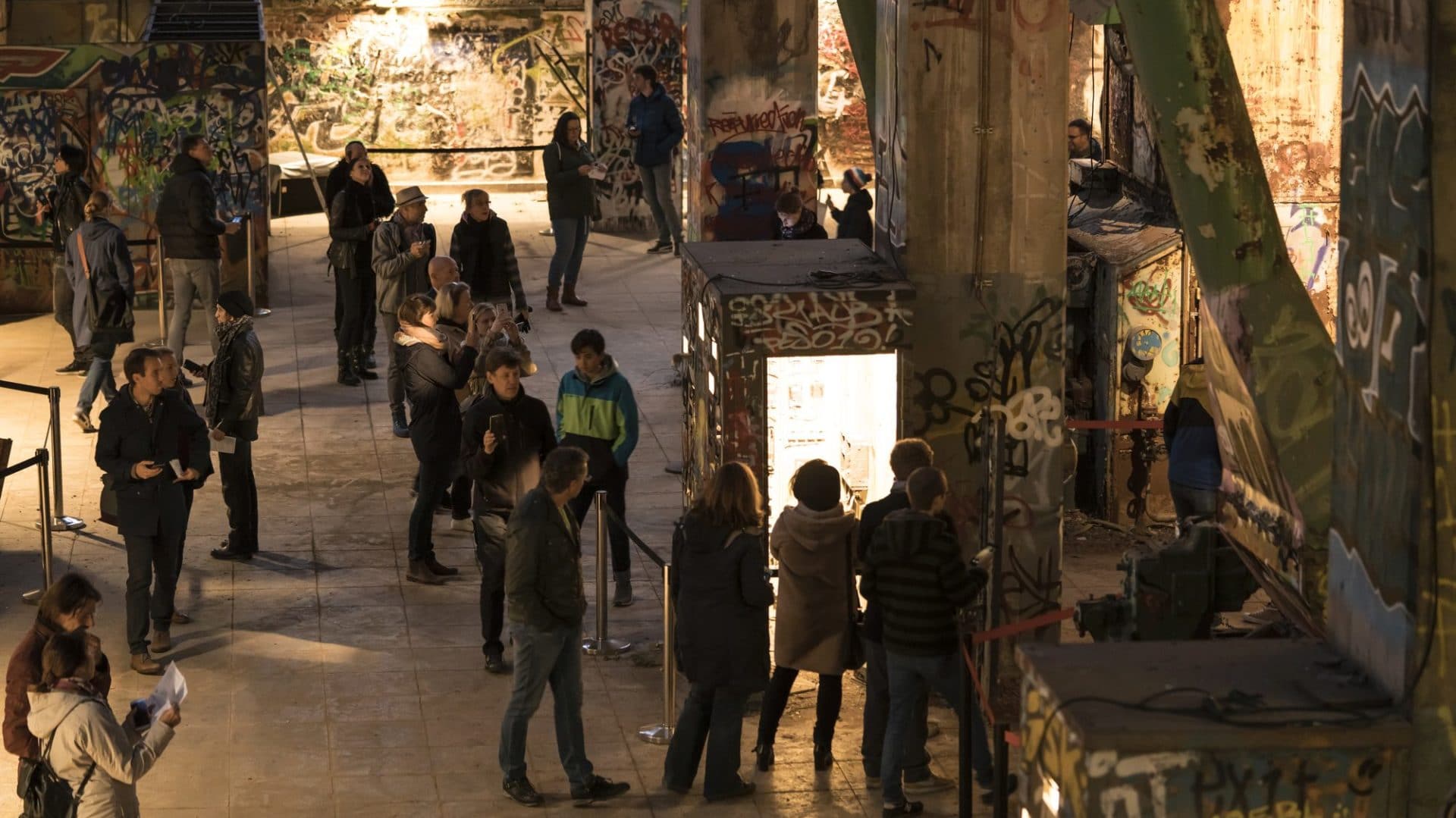AI as Partner, Not Competitor: Why We Started CORPUS
Technology has always shaped how art is made. With AI, this influence becomes more immediate — and more controversial. Many see AI […]

Technology has always shaped how art is made. With AI, this influence becomes more immediate — and more controversial. Many see AI […]
There is a certain sensation in listening to the sound of the orchestra from within the orchestra itself: a physical, larger-than-life experience that disappears as soon as the sound is heard from the more distant perspective of the audience. The “Inside MPhil” project, a collaboration between the Munich Philharmonic Orchestra and Sofilab, aims to make this experience, previously reserved for the orchestra members themselves, accessible to the public.
With this focus on accessibility, we developed an interactive GPS-driven app that runs on standard smartphones with standard headphones to deliver a 6 DOF experience built on the Unity game engine with Dear Reality Binauralization technology to create an imaginary orchestra in a green field that can be sonically explored by walking inside. Special attention was paid to making the musical quality as vivid as possible, using a specially miked concert recording rather than an instrument-separated studio recording.
In this article, we describe the workflow, discuss the decisions we had to make along the way, and go over our learnings that we will apply to our next projects.
“Lure” is an innovative project combining AI, music, and theater, where audiences interact with a machine-learning model named Parzival. The project showcases real-time, AI-driven performances, exploring the evolving relationship between humans and machines. Participants can experience AI’s creative potential in an immersive digital environment. This blend of technology and art offers a glimpse into the future of performance.
Curious? Dive deeper into this unique exploration here.
“Inside MPhil: Frühling” is a unique virtual experience that allows users to immerse themselves in a live orchestra performance by the Munich Philharmonic. Using a GPS-enabled smartphone app, participants can walk through a virtual soundscape where they hear instruments as if standing next to the musicians. The app utilizes advanced spatial sound algorithms, offering a 360-degree auditory experience, bringing Schumann’s “Spring Symphony” to life in any open space.
Here’s Mathis in his own words on the birth of this project.
“Maya” is an innovative mixed-reality techno-opera set in the ruins of a former heating plant in Munich. This unique experience blends augmented reality, opera, and techno music, allowing audiences to explore the remnants of a past civilization through the eyes of “Maya,” a digital being on a mission to save humanity. The immersive performance used an AR app that guided participants through the site, creating a dynamic, interactive experience where the physical and virtual worlds merged seamlessly.
Mathis Nitschke held an artist talk at the Opera Beyond conference in Helsinki 2019 about the Mixed-Reality-Techno-Opera MAYA about the very essence of this project: “Transforming opera audiences into active explorers”.
You can watch the full presentation here.
The sound impression for the musician in the orchestra is clearly different from the sound impression of the audience. Not only the instruments, but the entire body of sound is designed to resonate with the concert hall and enter into a symbiotic connection with the room. As a listener in the hall, one hears the result of this complex connection.
Is it possible to let a listener hear the sound of the musician within the orchestra through media? Read the report on a 360° Virtual Reality research project with the Munich Symphony Orchestra here.
Documentary film maker Felix Hentschel accompanied the production of the Mixed-Reality-Techno-Opera MAYA and held talks with the artists involved. The resulting film (ca. 40 min) illuminates the development of the Maya character and provides insights into the conception of the music and the design of the MAYA augmented reality app. Access the video in this blog post.
The article discusses how “Maya,” a mixed-reality techno-opera by Mathis Nitschke, became an unexpected economic success. Despite initial challenges, including a budget shortfall and the need to sell a large number of tickets, the project succeeded by leveraging creative marketing strategies, social media, and unique partnerships. The opera’s use of an industrial ruin as a venue and an AR app contributed to its popularity, drawing a diverse audience and selling over 1,500 tickets, ultimately making it a financial success.
For more details, read here.
